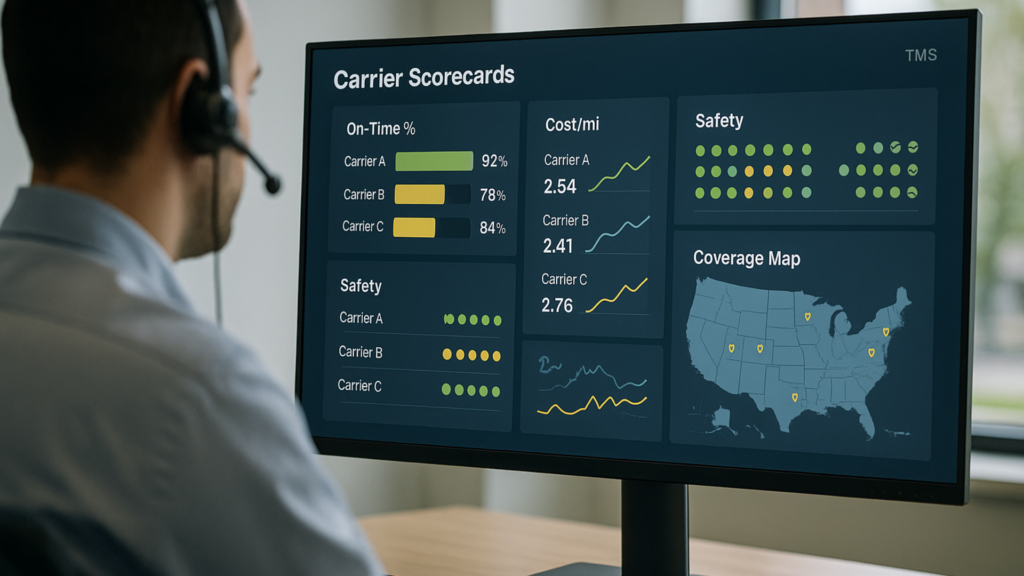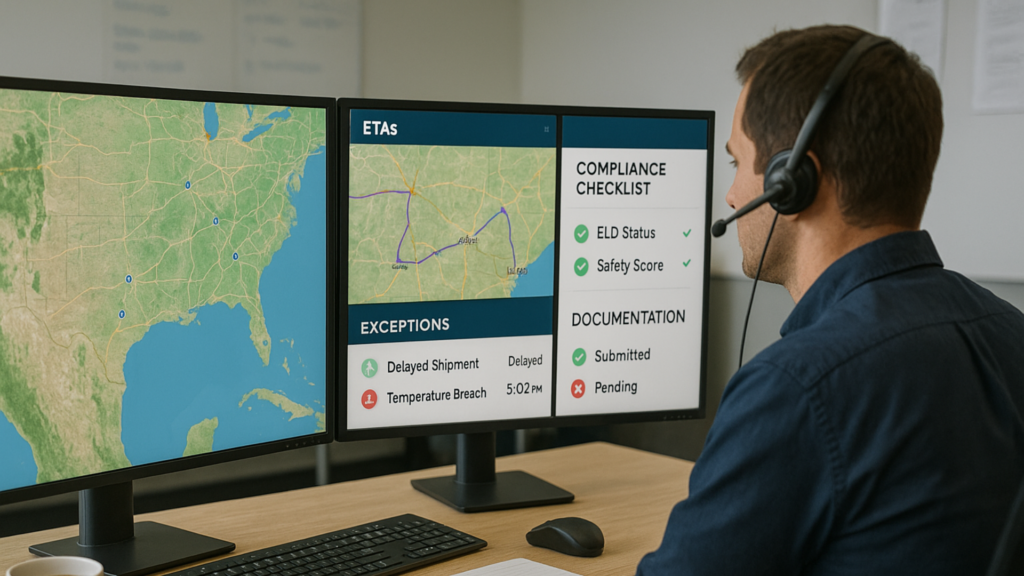
Managing carrier relationships is more than a procurement task—it’s a strategic discipline. In today’s competitive landscape, transportation isn’t just moving goods from point A to point B; it requires managing complex networks of third party carriers while meeting budget constraints, customer expectations and regulatory standards. Effective carrier management reduces transportation costs, improves on-time delivery, increases supply chain visibility, enhances customer satisfaction, supports compliance and fosters trust based partnerships.
Optimize carrier selection

Selecting the right carriers is the foundation of a reliable freight strategy. Logistics managers should evaluate candidates on reliability, geographic coverage, cost efficiency and safety records. Carriers that consistently meet pickup and delivery commitments, offer the equipment your network requires and maintain competitive rates will support longterm goals. Using data driven tools to analyze performance metrics—such as on-time delivery rates, freight costs and coverage—helps managers choose partners that align with operational needs. A transportation management system (TMS) can automate this analysis, consolidating data from multiple carriers and highlighting performance trends.
Build strong partnerships through collaboration
Carrier relationships shouldn’t be purely transactional. Cultivating longterm, collaborative partnerships leads to enhanced service during high demand periods, faster issue resolution and stronger negotiating positions. Establish regular checkins and performance reviews to align expectations, identify improvement opportunities and address small issues before they become major disruptions. Robust relationships encourage carriers to prioritize your freight when capacity is tight, ensuring reliability during peak seasons.
Increase visibility with technology
Visibility into shipment status enables logistics managers to be proactive rather than reactive. Realtime tracking and TMS integration let you monitor freight locations, adjust routes when disruptions occur and improve delivery times. By leveraging technology for complete supplychain visibility, you can reroute around traffic or weather delays and communicate status updates to internal stakeholders and customers.
Ensure compliance and monitor performance
Regulatory compliance and performance monitoring are essential to avoid delays and penalties. Adherence to safety protocols, accurate documentation and customs management reduce the risk of disruptions. Automating compliance processes with customs management systems and safety monitoring platforms streamlines documentation and integrates safety checks, improving operational efficiency. Carrier performance metrics—like delivery times, cost per shipment and claims—should be tracked over time to identify underperforming partners and highlight cost saving opportunities.
How Go To Truckers Strengthens Collaboration with Carriers
Go To Truckers selects and audits carriers based on reliability, safety, and geographic coverage. Our TMS analyzes performance and costs to assign the optimal carrier for each route, and we conduct regular reviews with carriers to align expectations. We offer real-time tracking and automate compliance documentation, allowing you to keep your supply chain running smoothly and risk-free.

No Comments yet!